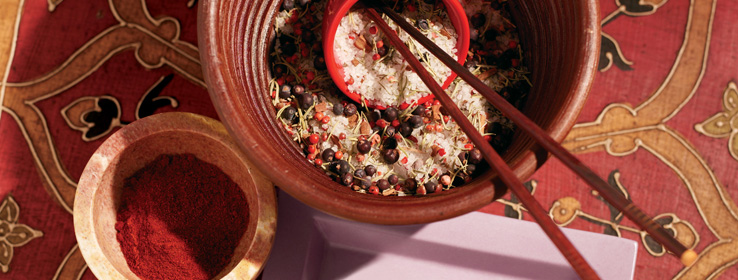It's important for designers to have a working knowledge of the meanings various cultures attach to hues. We start with red.
Designers consider many aspects of color when creating the palette for an interior space. Function, vision, mood and aesthetics are predominant factors in palette selection.
When working within a homogeneous culture, determining these factors is a relatively easy exercise because color meanings are fairly common. However, because we increasingly work and live in global, multicultural environments, it's becoming more important for designers to have a working knowledge of the meanings various cultures attach to hues.
You say tomato, I say ...
White, which many Western and some Eastern cultures consider a symbol of purity and cleanliness, is considered bad luck in China and Japan, where it's the color of death and mourning. Why? Because they associate white with wintertime, when nature is dead.
Purple, too, can be tricky. In Catholic Europe, purple is a symbol of death and crucifixion, and in some Middle Eastern cultures it signifies prostitution. Because purple is symbolic of such mystical and spiritual beliefs as Wicca, New Age spirituality and paganism, it can be perceived as going against Christian, Jewish and Muslim paradigms.
A look at raging red
Red has more personal associations and evokes more conflicting emotions than any other color. In Western culture it's traditionally been associated with anger, courage and love. Let's take a look at its symbolism and meaning in other cultures.
In ancient Chinese culture, colors corresponded with the five primary elements, the seasons and the compass. Red was associated with fire, summer and south. In modern-day China, red is the color of good luck, success and fortune, and is used in many cultural ceremonies. Brides dress in red during the traditional part of the wedding ceremony. People celebrate Chinese New Year by wearing red clothing and decorating homes with red. Gifts of money are traditionally given in red packets. Stock-market gains in China and other East Asian countries are displayed in red, while losses are displayed in green.
In Japan, red signifies blood, fire and the color of the sun: a symbol of energy, radiating its vitalizing life-force into human beings. Japanese culture looks upon red as a sensual color, and sometimes associates it with man's most profound urges and impulses. In addition, the color red is associated closely with a few deities in Shinto and Buddhist traditions, and statues of these deities are often decked in red clothing or painted red.
In the Indian subcontinent, red is the traditional color of bridal dresses and is frequently represented in the media as a symbolic color for married women. In addition, a red mark on the forehead is said to bring good luck.
In some parts of sub-Saharan Africa, red is considered holy. In these regions women are forbidden to wear red clothes. In other parts, red signifies mourning.
In Russia, red represents beauty. The Russian word for beauty derived from the word "red" and has the same root.
In Greece, Easter eggs are dyed red. When two people say the same thing at the same time, they use the Greek expression "Piase kokkino" (touch red), believing the event is an omen that the two will have an argument in the future, which can only be broken when the two touch the closest thing that is red.
In Jamaica, a popular slang for someone who is under the influence, or drunk, is "red."
To the Hindu, red symbolizes joy, life, energy and creativity and is traditionally worn at weddings.
The cultural basis for color symbolism can be very powerful. If you are designing a space that is intended for an audience of a different culture than your own or for a global audience, it pays to do your cultural homework before choosing a color palette.
For more information:








